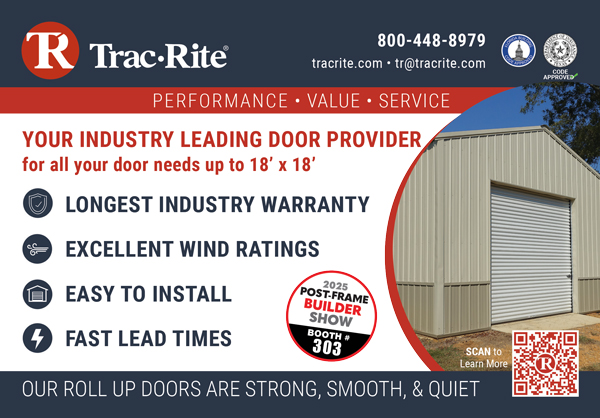It was just a few decades ago that many businesses functioned quite effectively without computers. Today those businesses are few and far between. While some may see this article as archaic, others may be grappling with these issues today. And those who have upgraded to computers, or began their business with computers in place, may feel they are in a parallel situation to the person questioning the necessity of the computer as they try to decide if they can justify an upgrade to the technology they use.
Introduction
The implementation of computers by any business involves some important considerations. Fundamentally, two major elements within each business — people and computer components — work synergistically to produce a better quality service and a higher level of productivity. The quality and productivity of each of these two elements play important roles in the implementation process. Clearly, the people have to be well experienced to provide their service. They must also understand how the software and hardware computer components can be used in their daily activities. They should select hardware and software that meet the immediate needs of their business and that consequently augment the flow of their activities without causing significant changes to them. Such a computer system would be less intimidating initially, yet would permit growth as their expertise increased. Consequently, this would diminish the time needed to close the gap between the existing technology and its use.
Can I Justify a Computer for My Business?
Historically, the justifications for purchasing a computer have been increased productivity improved communication, improved record maintenance and faster completion of repetitious activities. Owners of small firms may find it quite difficult to believe that after spending months reading manuals and getting familiar with a computer, increased productivity will result. What does increased productivity mean for a business? Much of what a “computer promises” takes an enormous amount of time to perfect. Does a small construction business have the time and money to invest in computers and computer applications?
Although it is sometimes not well explained, Groll and Turche (1987) report that the computer can do what you originally did by hand. Although it may take the same time to do the basic calculations, a computer can do a variety of extra functions not normally examined via hand calculations. Most construction firms are so busy completing jobs, they have very little time to do any detailed analyses of their previous jobs. Any added costs encountered during previous jobs are likely regarded as unfortunate; there is seldom time to examine the real costs.
The successful implementation of computer technology in the building industry is not, I believe, a technical problem, but a training and educational one. The main problems are limitations on computer access and frequency of computer use. Those who do not have unlimited access to a computer are less likely to use it. As they use it less and less, their ability to operate it diminishes. This experience can become extremely frustrating and may lead to the rejection of the computer as a viable tool. Today, user-friendly computer programs for structural analyses are readily available and will get better as a result of the intense competition in the computer software industry.
Computer Application in the Post-Frame Industry
The functionality and benefit of computers for correspondence, reports, and financial statements has been well established, and as a result, the majority of offices within the post-frame industry use the computer for word-processing and accounting. Today, the availability of specific use programs, databases, spreadsheets, and expert systems provide the required technology for scheduling, estimating, accounting, specification writing, documentation development, drafting, design and engineering, as well as the integration of some or all of these activities.
There are several computer programs on the market that would satisfy the needs for engineering and design of post-frame buildings. The author believes that in-house development of software is seldom necessary.
Considerations in the Purchase of Hardware and Software
Firms shopping for a computer program must consider the ability of the program to adapt to their present and future product lines. I would avoid reprogramming and the associated debugging of programs developed by someone else. That process takes considerable time and effort.
Two important measures of quality of software are (1) flexibility, and (2) compatibility. Flexibility refers to how well the program fits a firm’s existing product line, and how it may adapt to future product changes. Another aspect of flexibility is whether the software allows users to consider different assumptions for modeling structural analogs and loading conditions. The ability of a software program to integrate several functions, such as drafting, pricing, and engineering is most desirable. Integrated systems that design, draft, and price a building in a few minutes from a single input are becoming available.
Compatibility refers to whether the software is compatible with the hardware and existing software, such as the operating system, etc. It is important to ensure that the computer system has sufficient memory space for the software to be acquired. If not, upgrading will be necessary.
A measure of software productivity is how easy the program is to learn and use. The availability of support for both the implementation and ongoing operation of the program is an essential element. One aspect of support is well-written documentation that is kept current and that contains solutions of example problems and/or tutorials that the novice can use for practice.
An essential element of quality hardware is serviceability. A frequent computer user cannot afford to wait weeks for service.
(Ed. Note: A discussion of design criteria and limiting factors for design is omitted here due to considerations of space. The article continued with the discussion reprinted below of the programs the author specifically identifies as assisting with these factors.)
Solver, METCLAD and PPSA III
The unique feature of these three computer programs is that they are tailored for wood engineering. Using these programs, one can analyze and design beams, trusses, frames, and grids in two-dimensions, for virtually any type of loading conditions. The SOLVER program can also be used to analyze three-dimensional, skeletal structures.
The METCLAD program has the unique option to include diaphragm design of metal-clad, post-frame rectangular buildings. METCLAD is the only known program that directly incorporates diaphragm design of metal-clad, post-frame buildings.
The SOLVER and PPSA III programs can be used to include diaphragm design in the analysis but at least three sequential computer runs of the same post-frame are required for the final answer. These three computer runs are required to: (1) solve for the horizontal stiffness of the frame, (2) solve for the horizontal restraining force at the eave height, and (3) analyze the post-frame building with diaphragm action with METCLAD, the three runs are integrated into a single run.
These three computer programs are quite easy to learn and use, and each comes with a manual that shows a step-by-step procedure for operating the program. The manual includes solutions to example problems that allow the user to model the structural analog to simulate its actual behavior (such as simulating semi-rigid connections using fictitious members) and provides output results that are useful for checking the limiting factors for design.
Summary
Some of the most innovative building companies, both large and small, have virtually eliminated the manual aspects of drafting, estimating, scheduling, and engineering. Today, the market demands engineering speed, optimum design for safety and economy, and flexibility. Firms that are moving to take full advantage of electronic drafting, engineering, estimating, scheduling, and other functions should profit. Offering better service and improved turnaround will be the most important ingredient in increased profitability for many firms.
The successful implementation of computer technology in the post-frame industry is probably not a technical problem, but rather an educational one. Consequently, the educational issue is of paramount importance. Many post-frame professionals require information about the selection of computers, the capabilities of computers with respect to carrying out specific tasks, and the impact of computers on engineering speed, profitability, and on doing things differently. FBN























